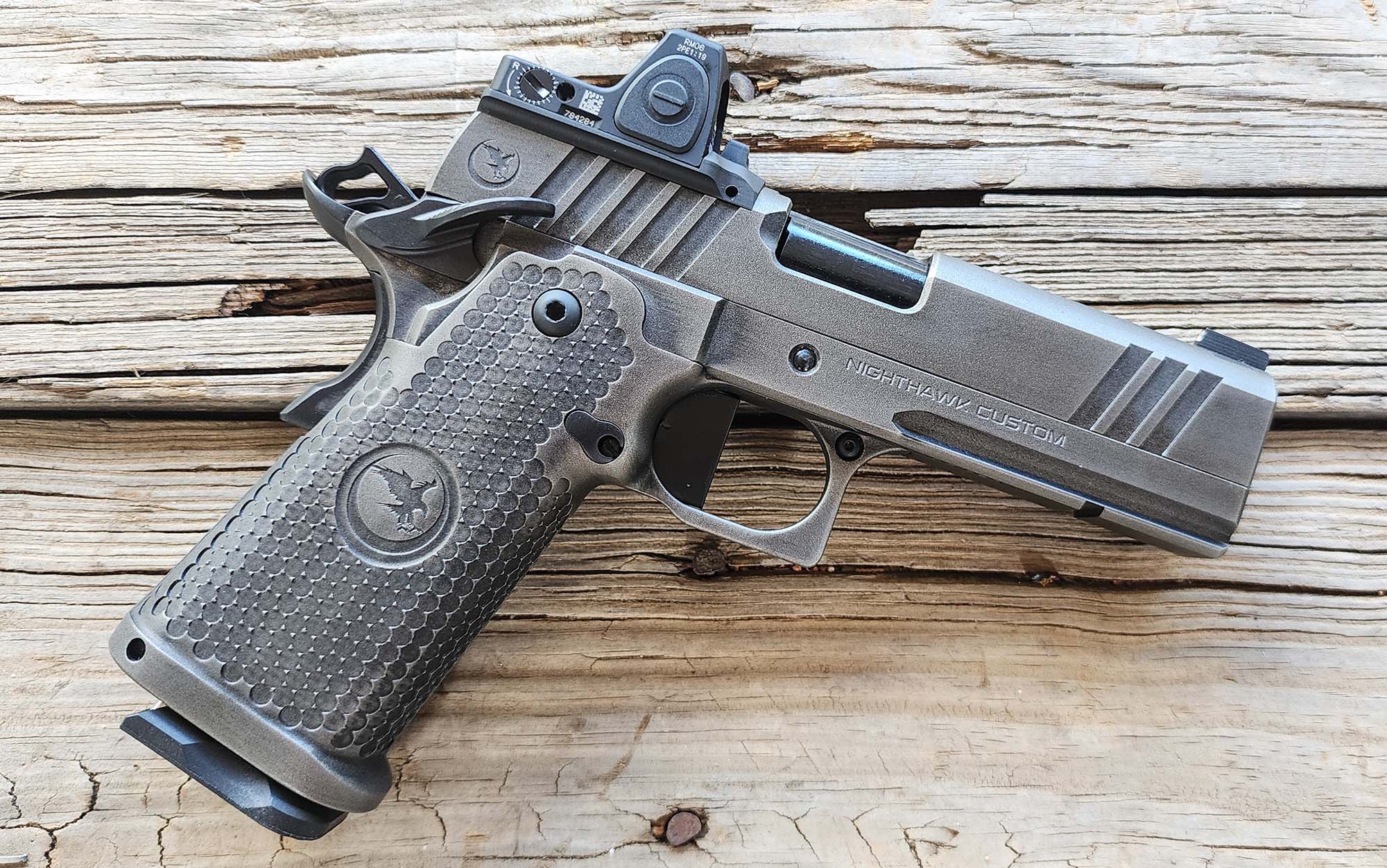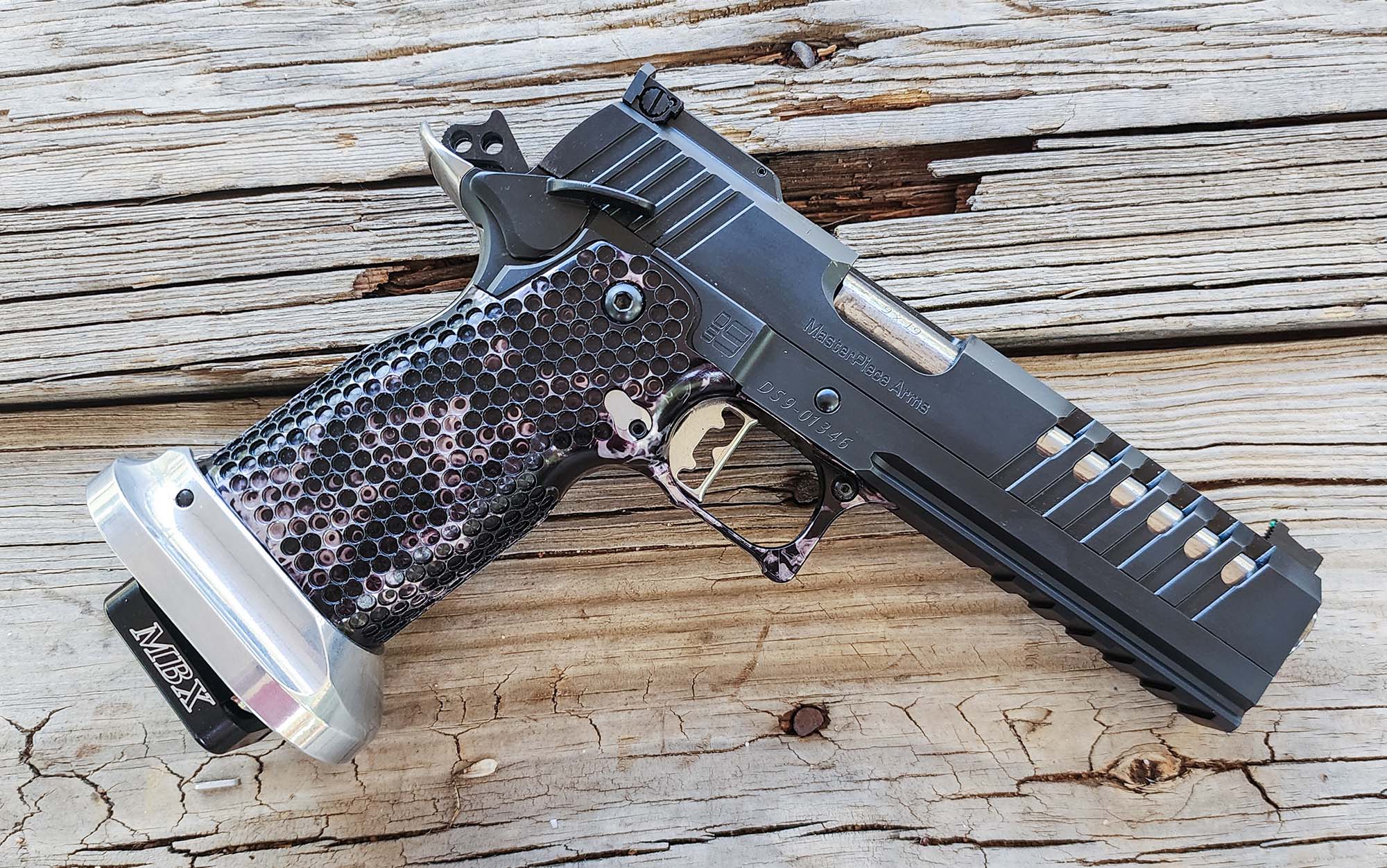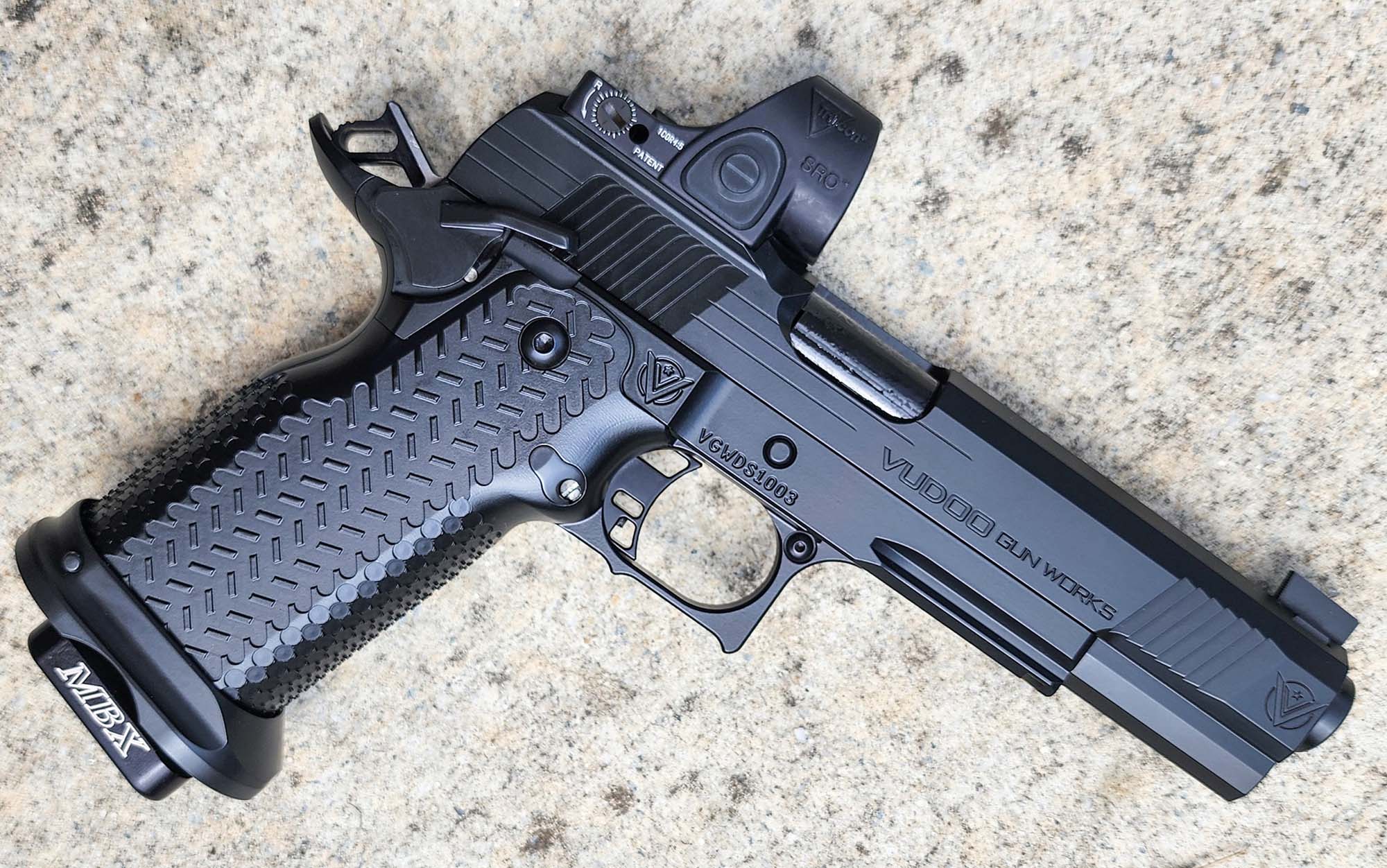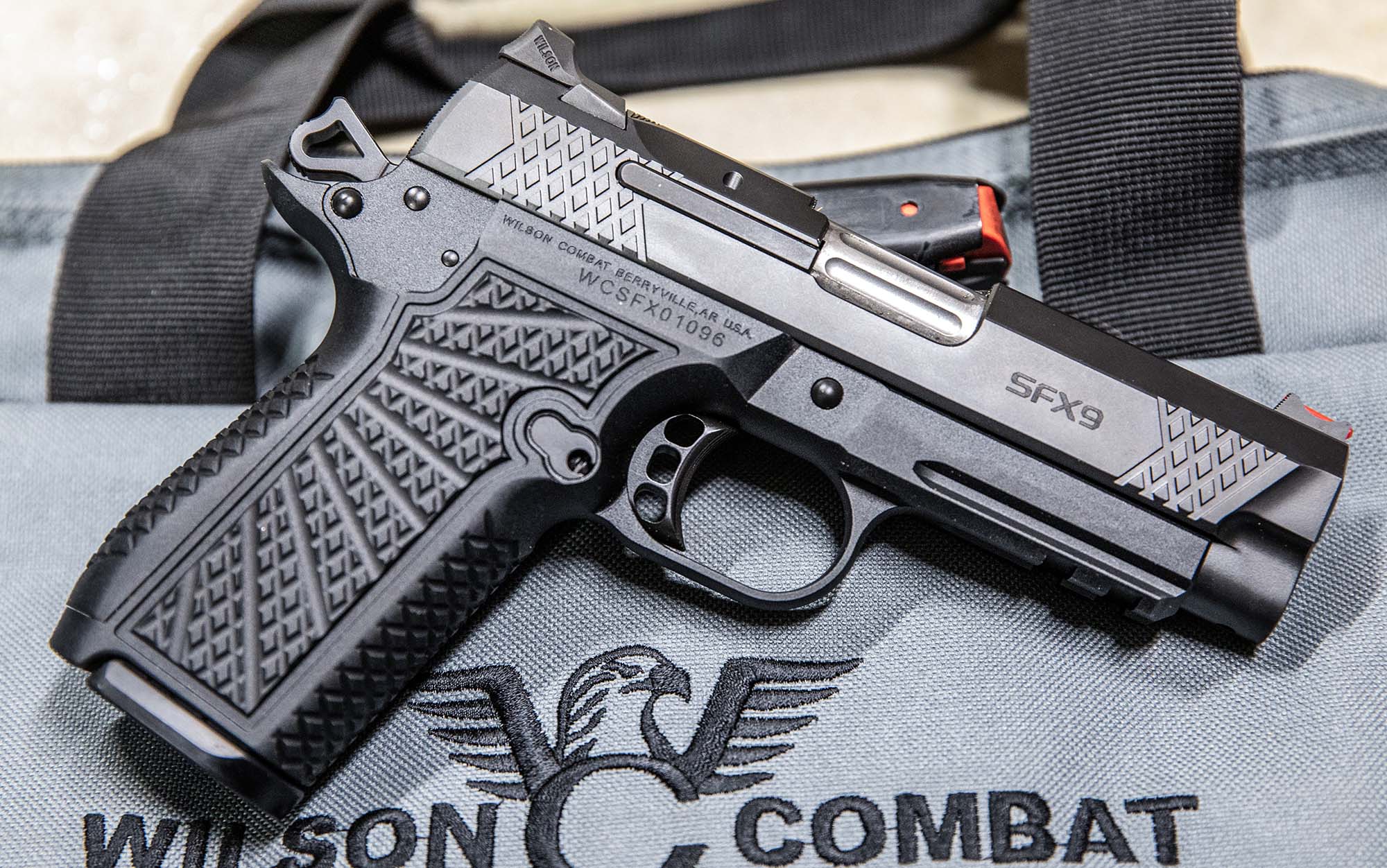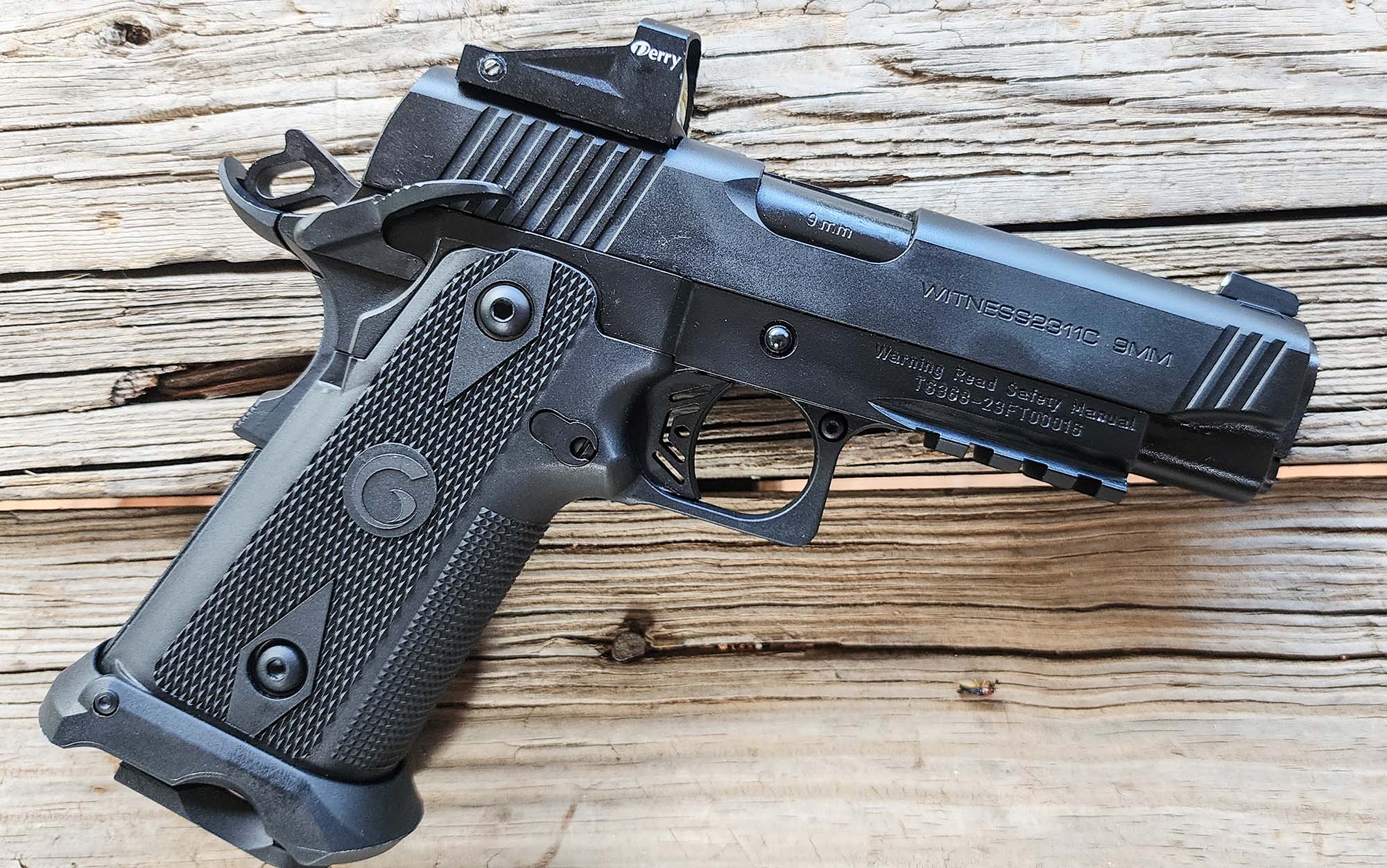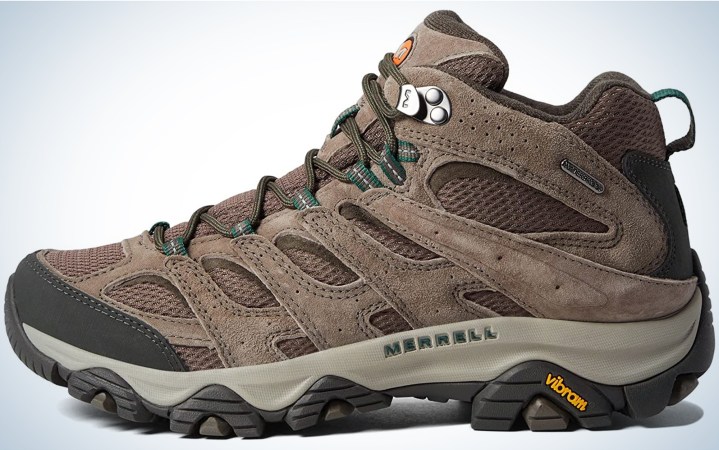The Best 2011 Pistols of 2023, Tested and Reviewed
Editor’s Choice (All-Around)
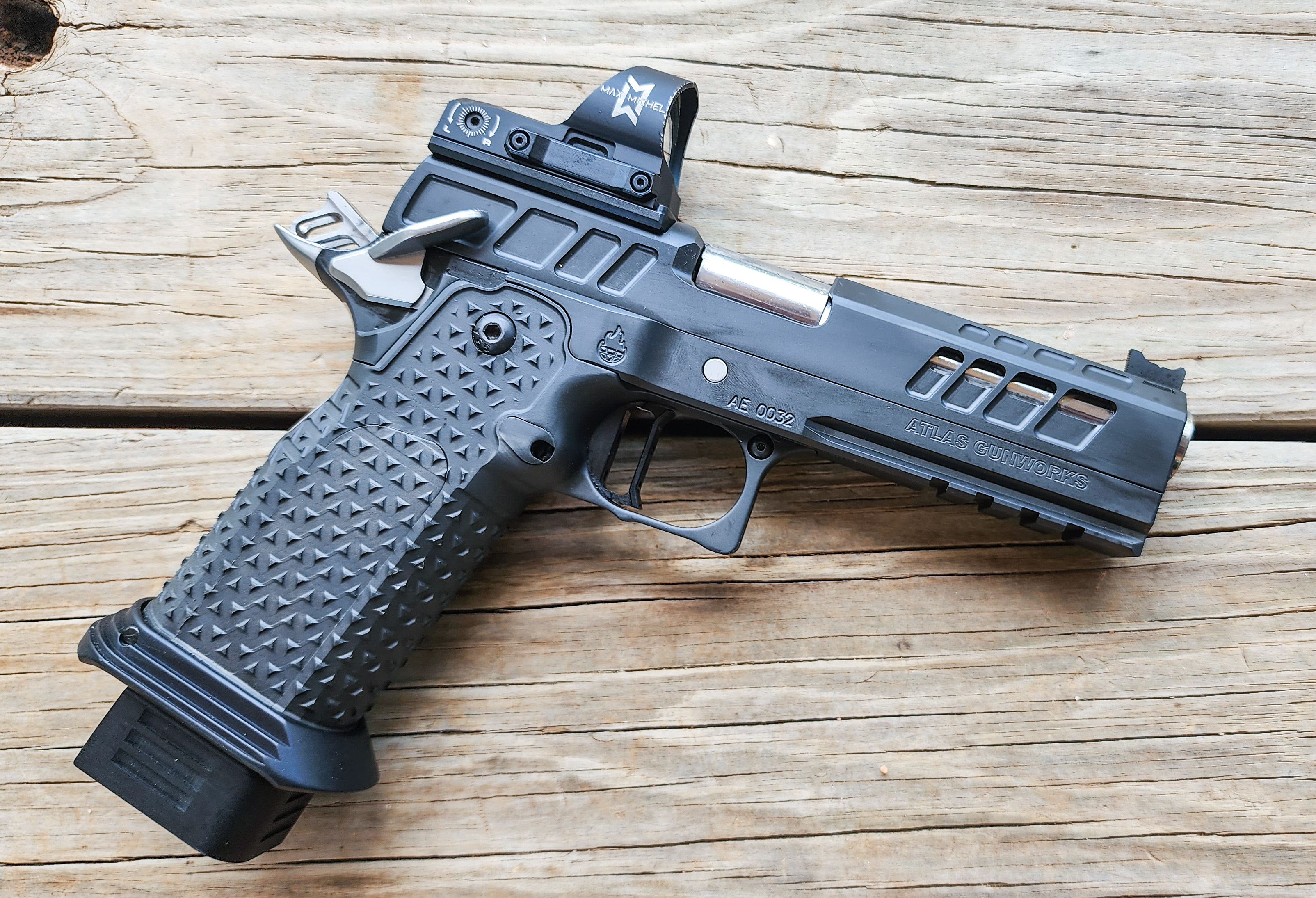
Atlas Gunworks Athena
Best for Competition
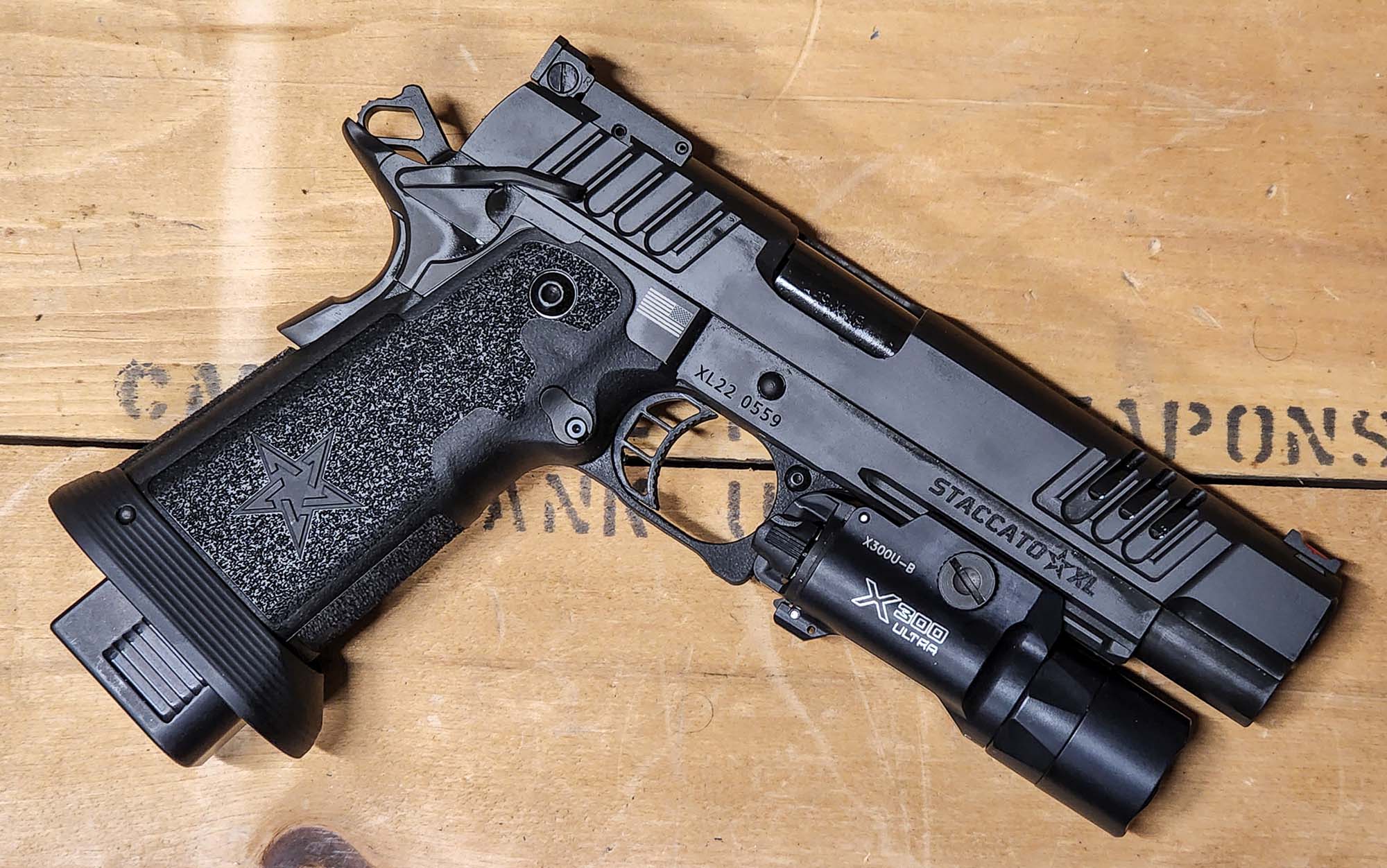
Staccato XL
Great Buy
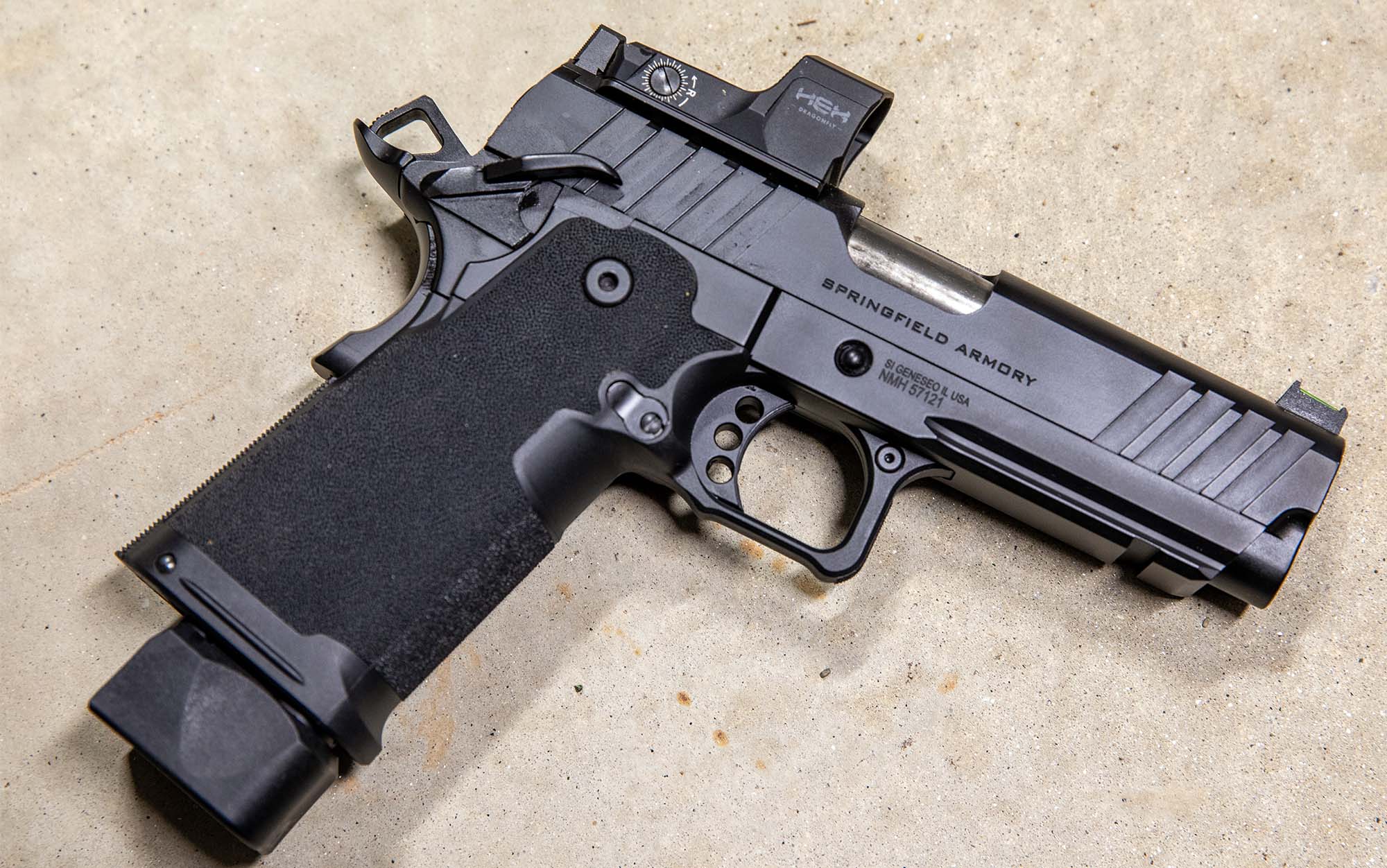
Springfield Prodigy
For pistol shooters, there are more options than ever to suit your style of shooting or fill a gap in your collection. However, if you want to shoot fast and accurately, look no further than a double-stack 1911, more commonly known as a 2011-pattern pistol. This type of handgun is a product of the 80s and 90s, combining a slicked-up 1911 with big magazines—and was born from the desire to achieve the utmost in performance in practical pistol competitions.
Today, this pistol design is in a renaissance, finding a home beyond the competitive scene as an Instagram-worthy range pistol or serious defensive tool. In light of this resurgence, I spent several months putting thousands of rounds through a spectrum of double-stack 1911 and 2011 handguns—everything from entry-level blasters to hand-built masterpieces.
Double-stack 1911s and 2011 Pistols Tested
- Editor’s Choice (All-Around): Atlas Gunworks Athena
- Editor’s Choice (Personal Protection): Nighthawk Custom TRS Commander
- Best for Competition (tie): Staccato XL
- Best for Competition (tie): Masterpiece Arms DS9 Hybrid
- Vudoo Gunworks Priest
- Wilson Combat SFX9
- Great Buy: Springfield Prodigy 4.25 inch AOS w/ HEX Dragonfly
- Girsan 2311
How I Tested Double-Stack 1911s and 2011s
So how do you test guns that are supposed to be faster and more accurate than everything else out there? Shoot it for accuracy further than normal and push it hard chasing speed.
But that’s not the only reason this was a challenging field of guns to evaluate. The fact is all these guns are really good. I was surprised at the level of accuracy and speed all these 2011 pistols could achieve.
So it really came down to fine points of differentiation in terms of features, workmanship, and ergonomics. Depending on your budget and needs, however, you won’t go wrong with any of these.
Shooting For Accuracy
Every pistol followed the same accuracy protocol as we used in our 2023 gun test, shooting from a standing position with support from a tripod topped with a sandbag. But instead of shooting at 15 yards, I pushed the targets to 25 yards. All accuracy testing was done with the included factory magazine.
Timed Drills
I performed various drills, including Bill drills, El Presidentes, doubles, target transition arrays, and other skill exercises, with each pistol. These drills gave me valuable insights into sight tracking, handiness, operation of controls, and an overall feel for each firearm. Additionally, I shot from both strong and weak sides. This put a spotlight on the pistols’ shootability and reliability under different conditions.
Swapping Magazines
I also swapped magazines among the pistols. I ran each pistol with magazines from different manufacturers, including Staccato, Atlas, MBX, Checkmate, and Duramag. I found that if the magazines fit, they cycled and shot well in each of the guns. The only limitations we found were in a few instances, the extended base plate would stretch too high and make contact with a large magazine well. The fix to this would be swapping base plates or filing them down to fit, or just going with longer magazines.
Shooting Different Types of Ammo
I fed the guns a variety of ammunition, ranging from 100-grain Lehigh defensive rounds to Federal, Remington, Winchester, and CCI Blazer blasting ammo in the 115- to 124-grain range. Defensive loads from Hornady and Speer were also included in the assessment.
This comprehensive approach aimed to provide a thorough and objective analysis of the pistols’ capabilities in terms of both accuracy and speed.
The Best 2011 Pistols: Reviews and Recommendations
Editor’s Choice (All-Around): Atlas Gunworks Athena
Takeaway: Atlas Gunworks Athena stands out as a versatile offering with a focus on competitive and action shooting. The hand-built construction, optimized components, and precision make it a top performer, particularly in USPSA’s new Limited Optics division.
Key Features
- Action: Single-action, semi-auto
- Caliber: 9mm Luger
- Weight: 2 pounds 6 ounces (with Sig Romeo 3 Max, no magazine)
- Barrel: 4.5 inches
- Length: 8.25 inches
- Finish: DLC
- Trigger pull weight: 1.75 pounds
- Safety: Ambidextrous
- Magwell: Yes
- Average of all ammo, 25-yard group sizes (5-shots): 1.64 inches
- Most accurate ammunition tested: Speer G2 Gold Dot 147 grain, 1.16 inches
- Magazine Included: Atlas Gunworks
- Price: $5,600
Atlas Gunworks has carved out a unique niche for themselves in the 2011 market. Instead of letting customers choose specific components, finishes, and other options, they are offering hand-built, optimized/purpose-driven spec guns so they can get more guns in customer hands. In addition, they also sell a fantastic series of magazines for any 2011 customer.
The Atlas Athena is a versatile offering, designed to excel in various applications, from competitive shooting to duty use. The full metal construction lends a solid feel to the hand, with a well-fitted grip that features innovative paneling options for customization. Out of the box, the pistol was configured the way I would set up a match gun, with a wide safety, Sig Romeo3 Max, inert grip safety, and a sub-2-pound trigger. This configuration is ideal for the USPSA’s new Limited Optics division.
When handling and shooting the Atlas, the slide cycles like it is on ball bearings. Everything locks up tight, the controls have a positive and satisfying feel, and the aggressive texture on the grip works with even wet hands. On the range, the Athena delivered the tightest average groups, making it the most precise of the test.
In my Atlas Athena, Federal’s 115-grain Syntec ammunition shot exceptionally well, especially for a budget-friendly load. This combination proved capable of making tight shots, at speed, with ease. While the Atlas may be expensive, it is an impressive pistol and doesn’t leave anything to be desired in terms of performance and quality.
Editor’s Choice (Personal Protection): Nighthawk Custom TRS Commander
Takeaway: The TRS Commander impressed me with its flawless execution, exceptional functionality, and aesthetics. Nighthawk’s attention to detail and balance between form and function make it a top-tier choice for both range and carry.
Key Features
- Action: Single-action, semi-auto
- Caliber: 9mm Luger
- Weight: 2 pounds 6 ounces (with RMR, no magazine)
- Trigger: 4 pounds 10 ounces
- Barrel: 4.25 inches
- Length: 7.75 inches
- Finish: Battleworn Bronze
- Trigger pull weight: 3.25 pounds
- Safety: Ambidextrous
- Magwell: No
- Average of all ammo, 25-yard group sizes (5-shots): 1.81 inches
- Most accurate ammunition tested: Hornady 115gr Critical Defense, 1.29 inches
- Magazine Included: Staccato G3
- Price: $5,219
Following Nighthawk Custom’s recent success in our 1911 Gun Test, I had high expectations for the TRS Commander. After numerous range sessions I had no doubt that Nighthawk produces exceptional pistols. The TRS Commander embodies perfection in its functionality, tactile experience, and aesthetics. Even under meticulous scrutiny, I found no flaws. Nighthawk’s unparalleled attention to detail is evident, from the perfectly executed flush-cut and countersunk barrel at the front of the slide to the seamless blend of every edge and corner.
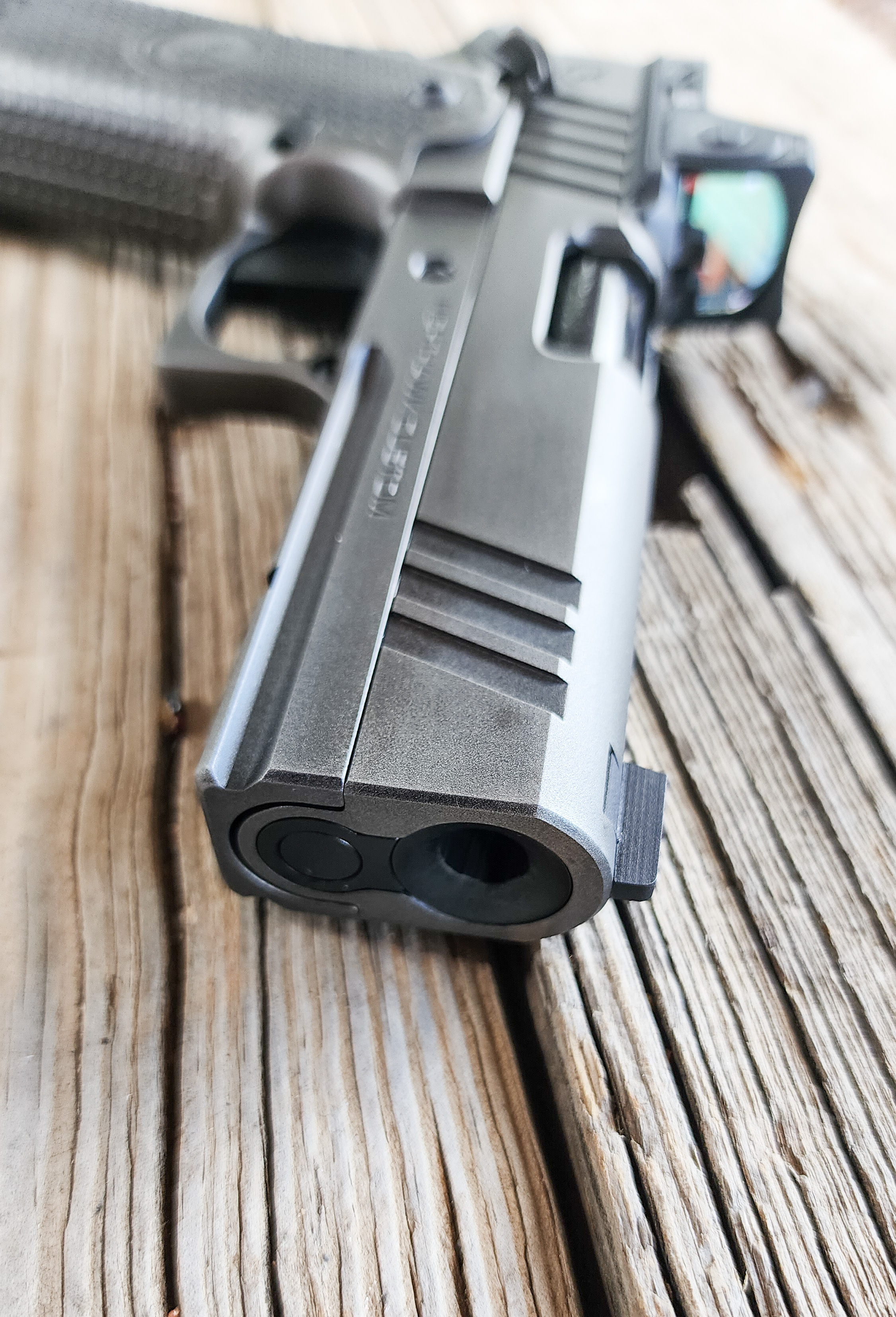
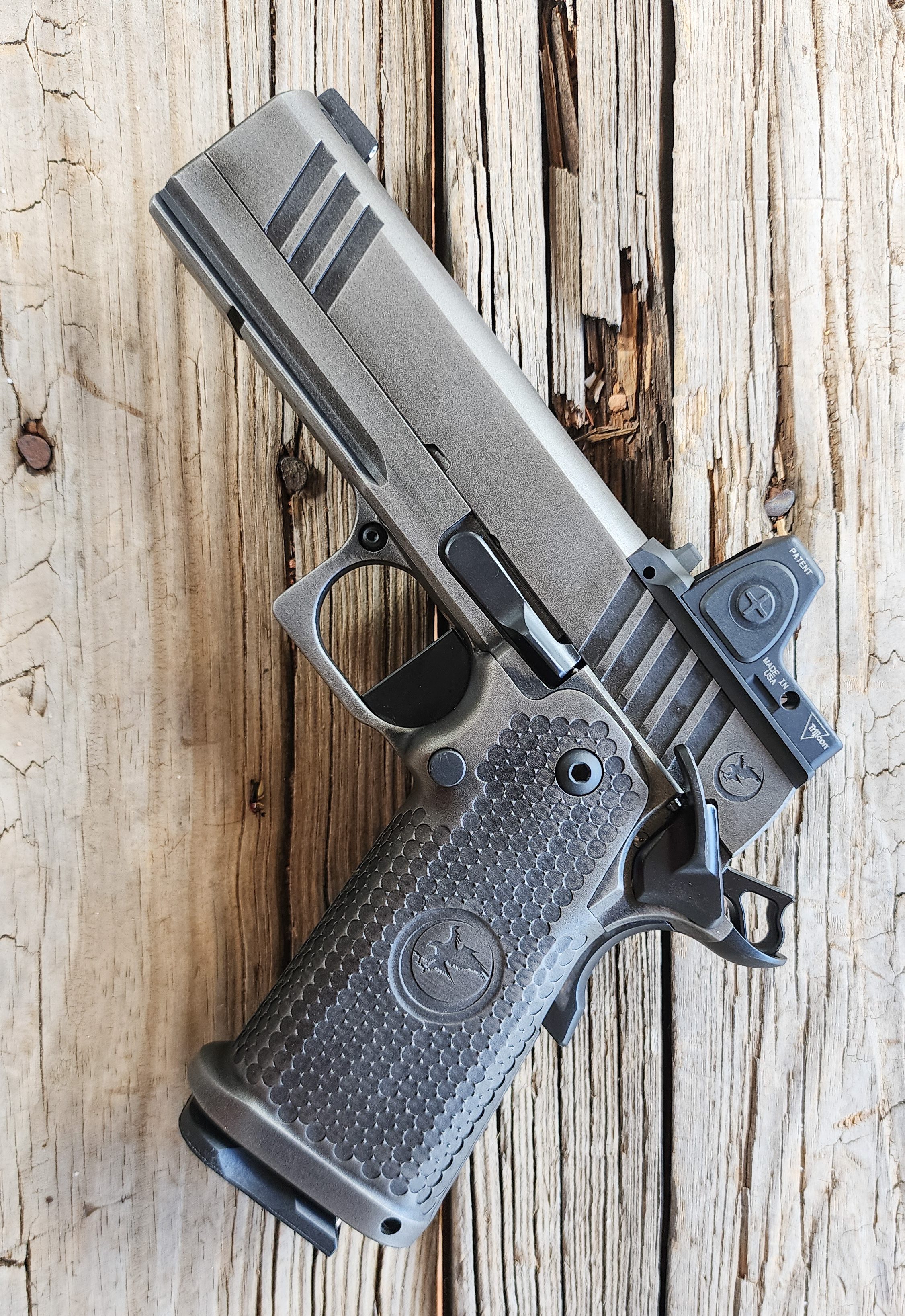
The controls exhibit the ideal “feel,” striking a perfect balance between resistance and smoothness. The included red dot and iron sights were impeccably regulated at 25 yards, straight out of the box. In terms of shooting performance, the TRS Commander excels across all ammunition types, delivering an average group size of 1.81 inches. Interestingly, lighter ammunition (100 to 115 grains) tended to produce slightly tighter groups.
While the TRS Commander is an outstanding range pistol, it is well configured well as a top-tier carry pistol, too. The grip strikes a nice balance between being grippy and clothing-friendly. With a 4.25-inch barrel, it balanced well in my hands and in the holster. If you have the budget to invest, the Nighthawk TRS Commander is a fantastic choice.
Best For Competition (tie): Staccato XL
Takeaway: The Staccato XL, a race-ready pistol, exemplifies the brand’s commitment to reimagining the 2011 platform. With a longer barrel, a tuned match trigger, and impeccable fit and finish, the XL is a standout choice for speed shooters.
Key Features
- Action: Single-action, semi-auto
- Caliber: 9mm Luger
- Weight: 2 pounds 6 ounces (no magazine)
- Barrel: 5.4 inches
- Length: 8.875 inches
- Finish: DLC
- Trigger pull weight: 2.25 pounds
- Safety: Ambidextrous
- Magwell: Yes
- Average of all ammo, 25-yard group sizes (5-shots): 1.74 inches
- Most accurate ammunition tested: Hornady 135 grain Critical Duty, 0.89 inches
- Magazine Included: Staccato G3
- Price: $3,599
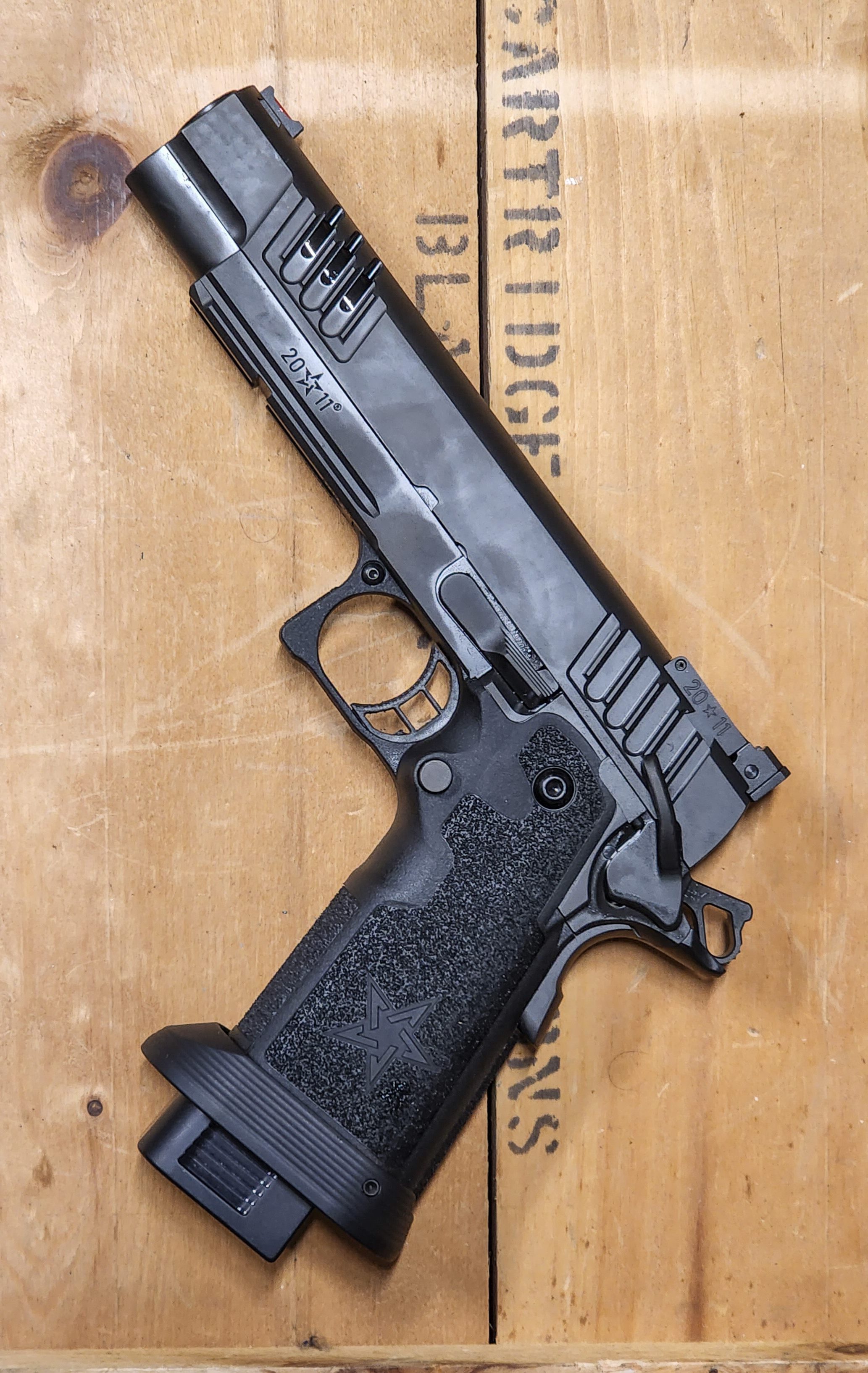
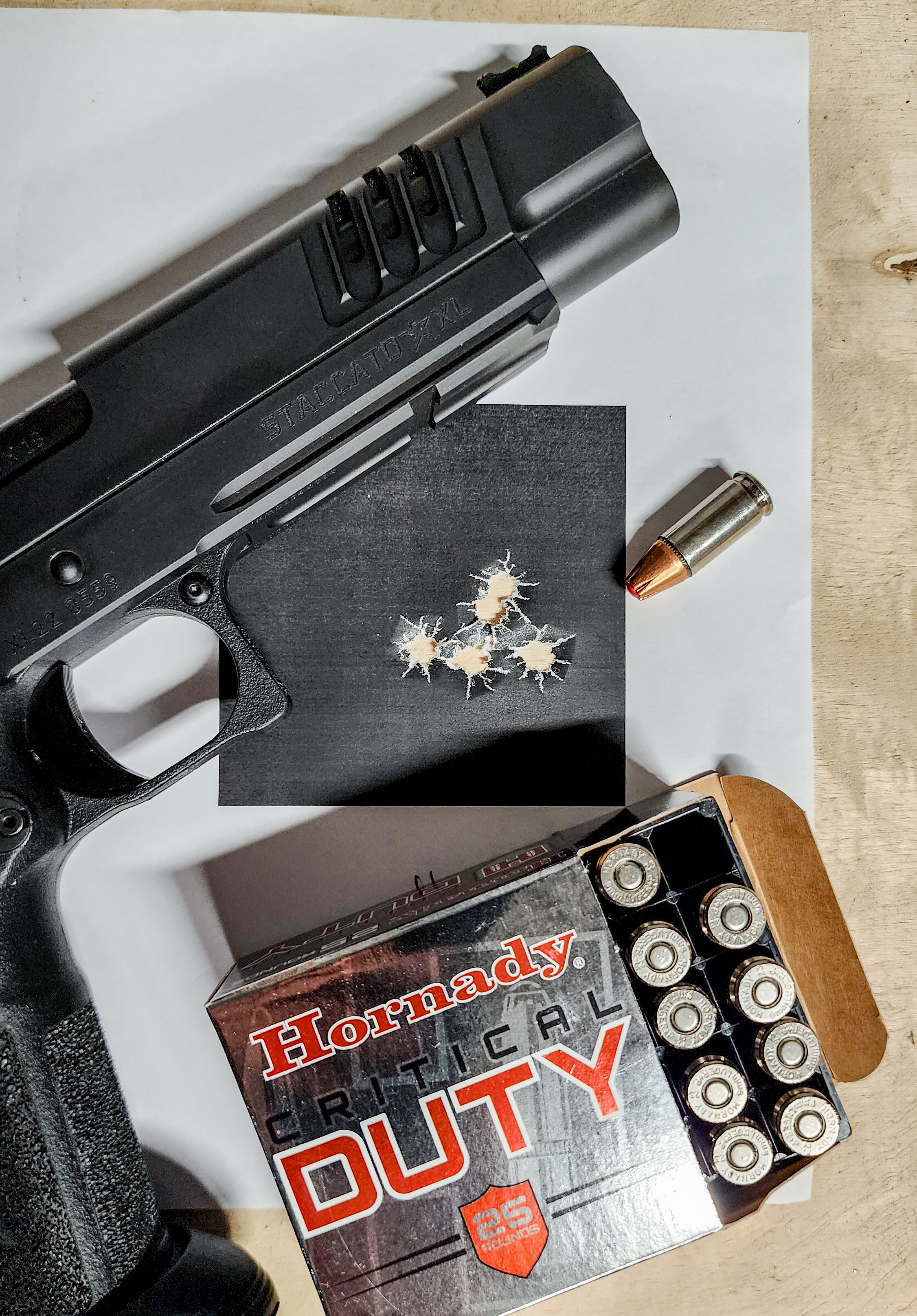
The 2011 renaissance we currently enjoy has a lot to do with the work Staccato put into reimagining the platform. They expanded the audience for the 2011 beyond the hardcore competitors that were the original enthusiasts. They developed models that appeal to those who carry guns for duty, self-defense, and general range work.
The Staccato P is the do-anything option, which we have reviewed several times, including one I ran for more than 20,000 rounds. We’ve also looked at the Staccato CS, their EDC model. For this round-up, I shot the Staccato XL, which is a 5.4-inch barreled model that hearkens back the company’s roots.
With an MSRP in the mid $3K range, the XL is billed as Staccato’s race-ready pistol. The longer sight radius lends itself well to use with iron sights, allowing for a more refined sight picture. This particular pistol in the test is my pistol, which has a thinner front sight and rear blade attached for even greater precision, as well as a change to a shorter trigger shoe to suit my preferences. Everything else was left stock, as it is a very well-equipped option.
The fit and finish on the XL is superb, with clean lines, broken edges, and a great DLC finish (I also opted for a DLC-coated barrel with this example). Part of making the pistol competitively ready, the XL features a 2.5-pound tuned match trigger compared to the 4- to 5-pound example in the P model. Between the lighter trigger and longer sight radius, the XL was easy to shoot well. I shot the tightest group of the test with it, a 0.89-inch 5-shot group at 25 yards with Hornady’s 135-grain Critical Duty 9mm load.
The texture of Staccato’s Tactical Grip offers a nice balance of stickiness in the hands but isn’t sharp or snaggy. For the speed shooter, the Staccato XL is capable of running with the best. The extra-long and heavier bull barrel and slide contribute to minimal sight disruption. And the light trigger’s crisp breaks makes it easy to put multiple rounds onto targets big and small with ease. Staccato may have changed the 2011 game, but it hasn’t forgotten its roots with the XL model.
Best For Competition (tie): Masterpiece Arms DS9 Hybrid
Takeaway: The Masterpiece Arms DS9 Hybrid brings precision hot-rod engineering into the competitive pistol arena. With a focus on speed and exceptional control, the DS9 Hybrid delivers outstanding performance in action pistol games, and general range use.
Key Features
- Action: Single-action, semi-auto
- Caliber: 9mm Luger
- Weight: 2 pounds 10 ounces (no magazine)
- Barrel: 5.0 inches
- Length: 8.75 inches
- Finish: Nitride
- Trigger pull weight: 2.0 pounds
- Safety: Ambidextrous
- Magwell: Yes
- Average of all ammo, 25-yard group sizes (5-shots): 1.84 inches
- Most accurate ammunition tested: Wilson Ammunition Reman 135gr, 1.29 inches
- Magazine Included: MBX
- Price: $3,599
Masterpiece Arms (aka MPA) started in the gun business offering a few simple guns based off of the MAC-10 submachine gun family, but has turned into a precision hot-rod shop over the past decade. Renowned in the precision rifle community, MPA chassis are among the most popular choices on the Precision Rifle Series circuit. Under the leadership of Phil Cashin and his team, MPA is recognized for its rapid evolution of designs, consistently addressing the specific needs of shooters. A couple years back, they made a significant move into the competitive pistol arena through the acquisition of CK Arms.
Each DS9 is hand-built and tuned at MPA. This is followed by rigorous testing and inspection before it goes to the customer. The lineup has various options, with the DS9 Hybrid standing out for its high-level workmanship and versatility. This model features the Accuracy X Sight Base, designed for versatility with compatibility for both iron sights and red dot sights, offering configurability to meet the shooter’s preferences. The Hybrid is well-suited for a range of applications, excelling in action pistol games, duty scenarios, and general range use.
Sporting a 5-inch barrel, a full metal grip, full-length dust cover and magwell, the DS9 Hybrid makes an impressive statement with its size and heft. The trigger, averaging a tight 2 pounds of total pull weight, enhances the pistol’s responsiveness. Notably, the MPA DS9 exhibits exceptional speed, capable of delivering 3 to 4 shots on target in the time it takes for some other models to fire two. When intentionally firing higher round count strings, the MPA DS9 almost sounds like a submachine gun, due to how easy it is to control the pistol and manipulate the trigger.
I have a couple of critiques regarding the MPA pistol, primarily focused on the finish and trigger shoe fit. The tri-topped slide exhibits some sharpness at the edges, particularly noticeable in the front slide serrations. Additionally, the trigger shoe displays a noticeable amount of up-and-down play in the grip slot. Although this doesn’t lead to malfunctions or operational issues, it is noticeable.
While the MPA DS9 may not boast the same aesthetic perfection as the Atlas or Nighthawk, it excels as a performer. For those seeking a competitive pistol, MPA provides multiple options tailored to various games and divisions, ensuring top-notch performance.
Vudoo Gunworks Priest
Takeaway: The Vudoo Gunworks Priest is an example of the growth of the market, with a company known for challenging the status quo, introducing a capable pistol that has a lot of value for its price. With unique milling, an optic-ready design, and thoughtful enhancements, the Priest offers a compelling package for competitive shooting and range enjoyment.
Key Features
- Action: Single-action, semi-auto
- Caliber: 9mm Luger
- Weight: 2 pounds 9 ounces (with Trijicon SRO, no magazine)
- Barrel: 5.0 inches
- Length: 8.75 inches
- Finish: Black Cerakote
- Trigger pull weight: 3.0 pounds
- Safety: Ambidextrous
- Magwell: Yes
- Average of all ammo, 25-yard group sizes (5-shots): 2.05 inches
- Most accurate ammunition tested: Speer G2 Gold Dot 147 grain, 1.25 inches
- Magazine Included: MBX
- Price: $3,305
Vudoo Gunworks, known for its work in supercharging the precision rimfire rifle market, has expanded its repertoire by challenging the status quo in the realm of 1911 pistols. My first encounter with the Vudoo pistol line was at the 2022 Precision Rifle Expo in Texas, where the Mobius, a single-stack variant, and their .22 LR offering were showcased.
But it wasn’t until this year that I got my hands on their flagship pistol—the Priest—which is a double-stack 9mm.
Priced at $3,305 MSRP, the Priest is not a budget option, but its out-of-the-box features makes it a compelling option. I’d go so far as to call it a great value. What you get with this pistol in terms of the feature set and workmanship could easily justify another $1,000 on the price tag. The slide exhibits unique milling inspired by the original Government pattern guns, but with facets and decorative milling that align with 21st-century aesthetics.
The sample I tested was optic-ready, featuring an enlarged platform and cut in the slide for mounting optics. The pistol’s grip is billed as Vudoo’s Hybrid Aluminum, which I found offers an aggressive texture without being abrasive on the hands. Additional enhancements, such as a flush-fit slide stop on the right side, an extended/enlarged magazine release, and a spacious magazine well, eliminate the need for aftermarket upgrades.
In terms of performance, the Vudoo Priest delivers a smooth recoil impulse and I found it easy to shoot quickly with all the ammunition I tested. It is competition-ready out of the box—but to verify that opinion I took it to several matches where it excelled.
Wilson Combat SFX9
Takeaway: Wilson Combat’s SFX9 is a scaled-down double-stack 1911 variant, blending refinement with a carry-friendly design. With a crisp trigger, excellent fit and finish, and practical features, the SFX9 balances size and performance.
Key Features
- Action: Single-action, semi-auto
- Caliber: 9mm Luger
- Weight: 1 pounds 11 ounces (no magazine)
- Barrel: 4.0 inches
- Length: 7.375 inches
- Finish: DLC Slide/Anodized Frame
- Trigger pull weight: 3.5 pounds
- Safety: Single-side
- Magwell: No
- Average of all ammo, 25-yard group sizes (5-shots): 1.97 inches
- Most accurate ammunition tested: Wilson Ammunition Reman 135gr, 1.21 inches
- Magazine Included: Wilson SFX 15rd
- Price: $3,210
Technically, this entry from Wilson Combat is not a true 2011 pattern pistol. But we included it as it fits in this group more naturally than into other categories. The SFX9 is a scaled-down double-stack 1911 variant that balances well in 9mm. This smaller pistol has a few elements that distinquish it from a typical 2011, in particular the unique design of the magazine, the solid single-piece frame, and the external extractor. The sample I tested wore iron sights and is configured more like a carry gun than a race pistol.
Fit and finish for the Wilson SFX9 was excellent, as one would expect of a custom pistol. The serrations on the slide and frame match, creating surfaces easy to grab without removing skin. All of the metal work is superb, with an even finish. As would also be expected, the trigger was crisp and clean, breaking at a carry-appropriate 3.5-pound pull weight.
When shooting the Wilson it took a bit of effort to coax the best accuracy from its iron sights. Even so, across all of the 115- to 147-grain ammunition, the Wilson averaged just under 2 inches at 25 yards. Should you opt for an SFX9, Wilson’s remanufactured 135-grain load delivered exceptional accuracy. Not only is it a great carry gun, but I have seen the SFX9 at a few sniper competitions being used by competitors looking for a lighter/smaller pistol when rucking miles and miles. Comparatively, the SFX9 with a 4.0-inch barrel is about the same size as a Glock 19, but significantly more refined.
Great Buy: Springfield Prodigy 4.25 inch AOS w/ Hex Dragonfly
Takeaway: Springfield Prodigy 4.25 inch AOS is affordable yet capable, bringing the 2011 design to a broader audience. With improved reliability and a variety of features, the Prodigy is a working man’s 2011 pistol.
Key Features
- Action: Single-action, semi-auto
- Caliber: 9mm Luger
- Weight: 2 pounds 3 ounces (with Hex Dragonfly, no magazine)
- Barrel: 4.25 inches
- Length: 7.75 inches
- Finish: Black Cerakote
- Trigger pull weight: 4.75 pounds
- Safety: Ambidextrous
- Magwell: No
- Average of all ammo, 25-yard group sizes (5-shots): 2.05 inches
- Most accurate ammunition tested: Hornady Custom 124-grain XTP, 1.23 inches
- Magazine Included: Duramag
- Price: $1,699 (with Hex Dragonfly)
In our roundup of 2011s, there were many very nice but very expensive pistols. Historically, 2011s carried a high price point because they were usually built by a gunsmith or they weren’t mass-produced with the same economies of scale that other designs enjoy. In the fall of 2022, Springfield Armory introduced the Prodigy which is a more affordable 2011 design for the masses. With an MSRP of the base pistol at $1,499, Springfield made waves and created an attainable option for more shooters. The real question most consumers have is, how does it stack up to guns costing double—and in some cases even four times as much?
Springfield did their homework on their 1911DS (double stack) option. For a lot of us, myself included, we felt that given Springfield’s history with building 1911s that it was only a matter of time before they entered the 2011 realm.
Out of the box, the Prodigy is a good looking pistol with features that check a lot of boxes.
Early reports on the Springfield Prodigy indicated it had some reliability and cycling problems, but Springfield did make a couple of tweaks and has been humming along since. Staff Writer Tyler Freel wrote a thousand-round review of the 4.25-inch model almost a year ago, shortly after these tweaks were made.
Our example for this roundup shot very well, digesting everything thrown at it. For this roundup, I received the pistol with a Hex Dragonfly mini red-dot sight. Quite frankly, the red dot was the most disappointing thing with the gun, offering significant curvature to the lens and a small window. As for the rest of the pistol, it shot exceedingly well with the field of ammunition. The Prodigy delivered a solid performance with an average of two-inch groups at 25 yards across all of the ammunition tested.
Another notable feature on the gun is the grip, which feels a little wider in the hand than the other more contoured options tested. The serrations of the slide were well done, the edges weren’t carefully removed like on the custom guns, but there was enough finish work done to keep the pistol from being sharp. Regarding the trigger, the sample I tested measured 4.75 pounds but was easy to shoot well despite the higher weight.
With the Prodigy, Springfield has done what it does best in the 1911 world, create a working man’s option that is pleasant to shoot. There were a few teething issues with the first production run of guns, but Springfield has worked out these kinks and our recent example ran quite well. Whether you want a more affordable 2011, or a great base gun to upgrade later, the Springfield Prodigy is a solid option.
Girsan 2311
Takeaway: The Girsan 2311 is an entry-level option, making the 2011 pattern more accessible. While lacking some refinement, the 2311 offers essential features at a fraction of the price, and is an economical double-stack 1911.
Key Features
- Action: Single-action, semi-auto
- Caliber: 9mm Luger
- Weight: 1 pounds 12 ounces (with EAA FAR-DOT, no magazine)
- Barrel: 4.25 inches
- Length: 8.06 inches
- Finish: Painted
- Trigger pull weight: 5.5 pounds
- Safety: Ambidextrous
- Magwell: Yes
- Average of all ammo, 25-yard group sizes (5-shots): 2.52 inches
- Most accurate ammunition tested: Wilson Ammunition Reman 135-grain, 1.64 inches
- Magazine Included: Checkmate
- MSRP: $999
When we began the process of gathering sample 2011-type pistols for our roundup, the Girsan 2311 had been announced but the pistols were not in the country yet. We were fortunate to get one of the early guns to add to our lineup. With an MSRP of $999, the Girsan is the most economical of the bunch. Made in Turkey, Girsan has been in the firearms business for 30 years. The 2311 release provided the most economical option to date for interested shooters.
Aesthetically, the 2311 is not as refined as the other guns, with a painted black finish and basic polymer grip. Feature-wise though, it has ambidextrous safety levers, oversized magazine well, forward slide serrations, extended controls, and a light rail. It also came with an EAA FAR-DOT red dot sight that did need some zeroing. All considered, the Girsan has many of the features that the more expensive options have but at a fraction of the price.
So what is the difference between a $3,000 to $5,000 pistol and the Girsan? The Girsan is a basic option that works, but doesn’t have the hand-fitted parts and workmanship of the other guns. The trigger as tested came in around 5.5 pounds, with a little grit in the takeup—though it did break crisply. During my shooting, the 2311 was able to wrangle a 2.5 inch average for accuracy at 25 yards. The bottom line, the Girsan 2311 works as an entry-level option for someone wanting to try out a 2011.
How to Choose a 2011
When attempting to identify the best 2011 pistol for your needs, consider the following seven criteria.
- Intended Use/Application: With the plethora of options available, defining the purpose of your 2011 choice should be your first action. Given the options to choose from, knowing if the pistol will serve as a self-defense, competition, or general range use pistol will help narrow down the field.
- Price: Establish a budget for your purchase, factoring in any additional costs for accessories or modifications. Find a balance between features and cost that meets your requirements.
- Barrel Length: The barrel length of a pistol is not as important for ballistic purposes as it is with rifles, but barrel length is important depending on how you are carrying/using the pistol. Longer barrels offer greater precision with iron-sights, while the extended length isn’t as important if using red-dot optics. Shorter barrels tend to conceal or carry better and may also cycle faster depending on the use and ammunition.
- Frame Material: Steel frames offer durability and soak up more recoil but with a weight penalty, while aluminum frames reduce weight but may sacrifice some durability.
- Grip Material: Metal grips provide added weight and some unique textures not possible with plastic grips. Polymer grips reduce weight and are generally less expensive, while also offering easier customization if you are handy with a Dremel or like to stipple grips.
- Sighting System: Decide between traditional iron sights or optics-ready configurations based on your preference. Some options can be made for optics only, while others offer the flexibility to switch between iron sights and red-dots with ease.
- Customization Level: Are you happy with the status quo of a production pistol, or do you want something specifically tuned to your preferences? With 2011s, there are options across this entire spectrum.
Origin of the 2011 Pistol
Any serious pistolero should have some familiarity with the 1911 pattern of pistol. Adopted by the U.S. Army in 1911 as it’s issued sidearm, the 1911 has a storied history, serving in a pair of world wars, fighting on both sides with lawmen and gangsters, winning at National Match-level bullseye competitions and playing an integral role in the evolution of modern defensive and competitive shooting disciplines.
Over time, the platform evolved. One significant change in the late 1980s was the introduction of double-stack 1911 variants, which gave competitors a huge advantage over single-stack pistols. Notable designs emerged from Para Ordnance, Caspian, and the collaboration of Virgil Tripp and Sandy Strayer (with some help from Chip McCormick) which became known as STI. The Tripp/Strayer design, patented in 1994 as the “2011,” featured a frame with a modular polymer grip system capable of accepting these double-stack magazines. Much like other format wars, one would become king and the STI design prevails today.
The Modern 2011 Pistol
Fast forward thirty years, and we find the 2011 and other double-stack 1911 derivatives being amongst the latest “it” guns for several reasons. The expiration of the 2011 patent in 2016 opened the competitive landscape, and coincided with a large number of new gun owners and enthusiasts, many of whom were looking for affordable performance-enhancing pistols.
This brought a new wave of entrepreneurs and manufacturers into the gun business. From entry-level choices like the Springfield Prodigy and Girson 2311, to hand-built production and custom options from Atlas Gunworks and Nighthawk Custom, the market has expanded to cover a spectrum of budgets and features to match customer wants or needs.
A significant development occurred a few years ago when the competitive shooting-focused STI underwent new ownership and rebranded as Staccato. This shift in purpose redirected the focus towards defensive, duty-grade, and general-shooting pistols. While numerous custom shops produce double-stack 1911s, Staccato has played a pivotal role in making this genre more accessible to a wider audience.
2011 Pistols Versus Double-Stack 1911s
The term “2011” has commonly been used as a shorthand reference for double-stack 1911s, but it’s important to note the specific characteristics outlined earlier. Although the 2011 patent has expired, Staccato holds a trademark for the name. To avoid confusion, consumers might use the term “2011” generically, while manufacturers may opt for the more specific and accurate “double-stack 1911.”
Magazines for 2011 Pistols and Double-Stack 1911s
Reliability in any semi-automatic firearm is dependent on the ammunition feed source, and in handguns that is the magazine. Pistol designs have achieved greatness or abysmal failure based on the accompanying magazine design. Renowned firearms expert Ken Hackathorn aptly said, “Anyone can design a firearm, great designers can make reliable magazines.”
Both single-stack and double-stack 9mm 1911s have historically struggled with magazine issues due to the overall length of the 9mm cartridge being a fair amount shorter than the original .45 ACP. While the .45 ACP typically measures 1.275 inches in overall length, the 9mm, at its longest maximum length according to SAAMI, is only 1.169 inches. Though this fraction of an inch doesn’t sound like a lot, it makes a significant difference when trying to position rounds and feed from the magazine into a chamber. It’s worth noting that most other designs scale the 9mm and .45 ACP options to account for this, while the 1911/2011 maintain a constant size.
The 2011 pattern has been around for several decades, but it was known to be persnickety with magazine reliability. In my opinion, the recent meteoric rise in popularity has been enabled by improvements to the magazine. Historically, the first-generation designs of double-stack 1911 magazines, including the STI pattern, required a trip to a gunsmith for tuning to the specific gun, as well as regular maintenance to keep peak performance.
For competitive shooters, it meant treating your race gun like a race car and doing the maintenance to get the performance. However, the advent of ultra-reliable polymer pistols like the various Glock models has shifted consumer perceptions about the necessity of regular cleaning.
STI’s introduction of the second-generation magazine design played a pivotal role in improving reliability. Presently, Staccato offers an even better third-generation magazine known for its reliability, and other reputable options are available from Atlas Gunworks and MBX magazines.
2011 Pistol Magazine Length: 126mm vs 140mm vs 170mm
When searching for magazines for 9mm chambered 2011s, you may encounter lengths instead of capacities. This size specification corresponds to USPSA/IPSC overall length requirements, explaining why magazines are often listed in this manner. Some manufacturers, such as Atlas and MBX, offer magazines with a thin follower that prevents the slide from locking back but provide maximum capacity. Alternatively, opting for one less round of capacity allows the slide to lock back with a different follower design. Staccato magazines, on the other hand, come standard with a follower designed to lock the slide to the rear. Various floor plate options further enhance capacity.
Generally speaking, the following lengths equate to the following capacities:
- 126mm: 17 rounds of 9mm, flush-fitting
- 140mm: 20 to 21 rounds of 9mm, protrudes slightly from the grip
- 170mm: 25 to 26 rounds of 9mm, the big stick magazine
Final Thoughts on 2011 Pistols and 1911 Double-Stacks
The world of double-stack 1911s has experienced a remarkable resurgence and has evolved beyond being a specialized competitive pistol. This explosive growth of interest is yet another chapter in the storied history of the 1911 and 2011 families of pistols. The double-stack 1911 originated with pistols from Para Ordnance, Caspian, and the renowned collaboration between Virgil Tripp and Sandy Strayer, resulting in the iconic STI 2011.
This evolution continues today, with manufacturers like Staccato, Atlas Gunworks, Nighthawk Custom, Masterpiece Arms, Vudoo Gunworks, Wilson Combat, Springfield Armory, and Girsan offering a spectrum of options catering to various budgets and preferences.
With the diverse options available, there’s a double-stack 1911 for every enthusiast and nearly every budget, whether you’re a competitive shooter, a self-defense advocate, or simply someone who appreciates the craftsmanship and performance of these iconic pistols.
- Editor’s Choice (All-Around): Atlas Gunworks Athena
- Editor’s Choice (Personal Protection): Nighthawk Custom TRS Commander
- Best for Competition: Staccato XL
- Best for Competition: Masterpiece Arms DS9 Hybrid
- Vudoo Gunworks Priest
- Wilson Combat SFX9
- Great Buy: Springfield Prodigy 4.25 inch AOS w/ HEX Dragonfly
- Girsan 2311
The post The Best 2011 Pistols of 2023, Tested and Reviewed appeared first on Outdoor Life.
We may earn revenue from the products available on this page and participate in affiliate programs. Learn More ›

